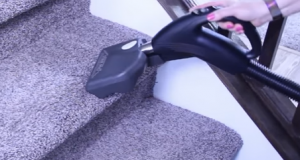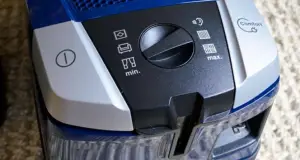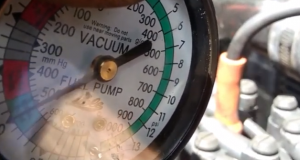How Many Watts Does A Vacuum Use?
Are you considering purchasing one of the New Energy-Efficient Vacuum Cleaners?
There are various types of vacuum cleaners to pick from. However, when picking the most energy-efficient appliances, we’ll go over some of the most significant aspects and trade-offs, such as vacuum cleaner energy usage.
Do Vacuum Use A Lot Of Electricity
The amount of energy used by vacuum machines varies. The motor is a key source of vacuum cleaner power consumption. Commonly available vacuum versions include motors that range from 500 to 3,000 watts, with the average unit consuming around 1,400 watts. Other factors influence vacuum cleaner energy usage as well.
A hardwood floor is more straightforward to vacuum than a heavy rug, which may need many passes and more time. The filtration system and other features like lighting and sensors have an impact on power consumption. The final point to consider is how you maintain your vacuum cleaner. A blocked filter and an empty bag impair the efficiency and increase power consumption.
Finally, consider how your vacuum might help other household systems, such as cleaning air ducts. Then, use this quiz to calculate the cost of running appliances.
How Much Power Does My Vacuum Cleaner Use?
Look for the wattage on the appliance label to determine the energy usage of your vacuum cleaner. Then, calculate how much time you spend vacuuming every day, week, or month. To calculate the kilowatt-hours you’re consuming, multiply the time spent by the wattage and divide by 1,000. You may also use an online energy consumption calculator to help you with the calculations.
Is It True That less Powered Vacuums Provide Less Effective Cleaning?
Low-wattage vacuum cleaners can be equally as effective as high-wattage devices. Cleaning efficacy is affected by the motor’s design, the filter, and the general design of the hose and cleaner heads. A power nozzle, for example, adds more power to the cleaner head, significantly increasing its cleaning effectiveness.
Selecting the Perfect Vacuum Cleaner for Your Home
Consider affordability, ease of use (including convenience, flexibility, and storage), and vacuum cleaner energy consumption when selecting a type of vacuum cleaner.
Automated Vacuum Cleaners
Automated vacuums make cleaning your floor a breeze. These vacuum robots have clever technology that allows you to command them where and when to clean. Some of the higher-end automated vacuums use lasers, sensing, and Wi-Fi to navigate your house. They only use electricity when recharging in docks in between cleanings. Even when left connected all the time, most consume less electricity than a typical upright.
Stick Vacuum Vs. Upright Vacuum
The typical upright vacuum has existed for as long as vacuums have existed. They are popular because they offer the most incredible suction of any vacuum cleaner. The disadvantage is that they might be hefty and difficult to maneuver. However, advances in motor design have resulted in relatively lightweight stick vacuums with adequate suction.
Expect to spend a premium to have the same suction as an upright. Still, if you don’t have any pets and have hardwood floors or low pile rugs that are easy to clean, a stick vacuum may be an excellent choice. If you’re hauling the vacuum upstairs and downstairs, weight and convenience may be deciding considerations in your stick vs. upright vacuum purchase.
Upright Vs. Cylinder Vacuum Cleaners
Uprights provide more suction per dollar spent and clean faster because of their larger cleaning heads. If you require adaptability, a cylinder may be a better alternative. They generally come with a range of attachments for cleaning various surfaces, including curtains and upholstery. This sort of vacuum cleaner is also lightweight and easier to maneuver. In addition, to compensate for weaker suction, some machines incorporate power-assisted nozzles and cleaner heads that offer a boost where it is most needed.
Bag less Vs. Bag Vacuum
When deciding between a bagless vs. a bagged vacuum, price is likely to be a significant consideration. Vacuum bags may be costly. And they certainly contribute to the landfill problem. That is why bagless vacuums are both cost-effective and environmentally friendly. Bagless vacuums, on the other hand, need more frequent emptying, which might be inconvenient.
If you have allergies or asthma, you release minute toxins into the air every time you empty the trash. Therefore, you will also need to clean the filters regularly. If your vacuum requires a HEPA filter, the money you save on bags might be used to purchase new filters.
Frequently Asked Questions
What is the most Reliable Suction Power of a Vacuum?
The perfect way to find out the suction power is Air Watts. Canister vacuum cleaners should have at least 220 AW whereas, upright vacuum cleaners should work perfectly at 100AW.
How to know if the Vacuum is Efficient or not?
Well, to verify the vacuum’s performance levels, you need to check its suction power. For this, attach the vacuum’s head to the wall. A high suction appliance will remain attached to the wall. Or use the water lift method.
Bottom Line
Only when charging do cordless vacuum cleaners consume electricity. Therefore, they consume less energy than corded devices on average. They are, however, less intense as a result of this trade-off. Depending on the capacity level of the battery, they may require regular recharging. The energy savings may not be worth it if you have a large home with thick carpeting.




